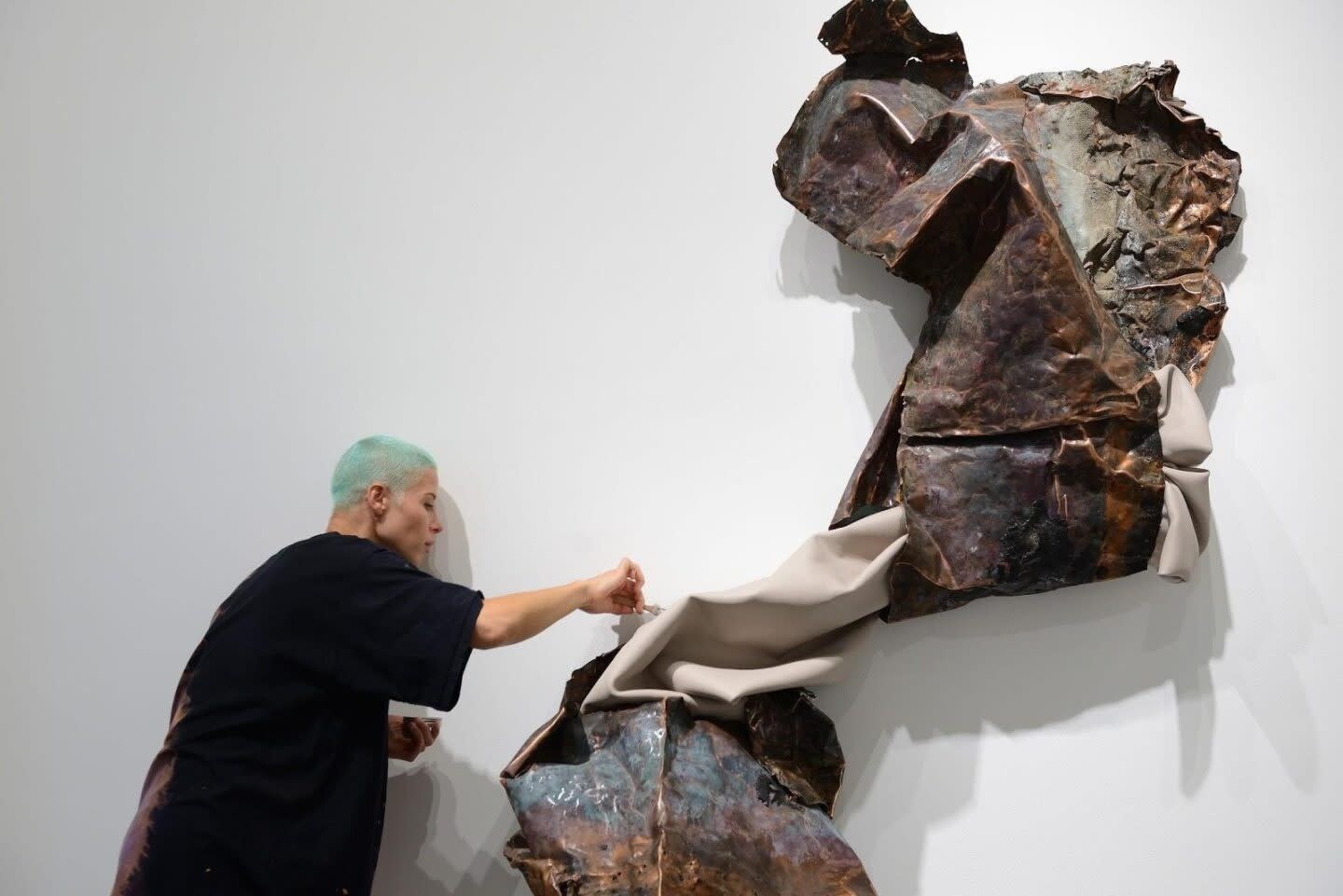The Brooklyn-based multimedia artist’s first solo show in Italy contains seven new works, paying tribute to American singer Betty Davis. Because it’s in my blood is on view at Galleria Poggiali in Milan from 24 September- 20 November.
pproaching painting and sculpture in a unique and profoundly personal way, Kennedy Yanko (St. Louis, b. 1988) explores the unprecedented possibilities of abstraction through found materials embodying the inside and outside conflicts of the self, in relation to the world around us. In the past, the artist has defied gender norms not only with her stylish platinum (now blue) buzz cut, but by creating alluring sculptures with traditionally male-dominated mediums such as rubber, metal, wood, and marble.
The copper metal material in her latest exhibition, she says, is instinctively chosen like a partner in a dance where she domesticates it through a miracle of a new aesthetic life, where it gets paired and embraced by these very sensual “painting skins.” The artist uses her background of painting to add colorful and metallic details to her “skins” that transform the feel of harsh, heavy, “masculine” mediums to an interpersonal relationship with Yanko’s technique and perception, which has changed over time.

We admire Yanko for her strong and inspiring personality, formed through her aspiration of never-ending growth, restless curiosity towards the human sensibility, and a need to feed her intellect and her artistic research.
Represented by galleries such as Denny Dimin in New York, Kavi Gupta in Chicago, and Vielmetter in Los Angeles, the artist has already exhibited in several institutions across US. Her work is also already in prestigious collections, including the likes of JP Morgan, Beth Rudin DeWoody and Helyn Goldenberg.
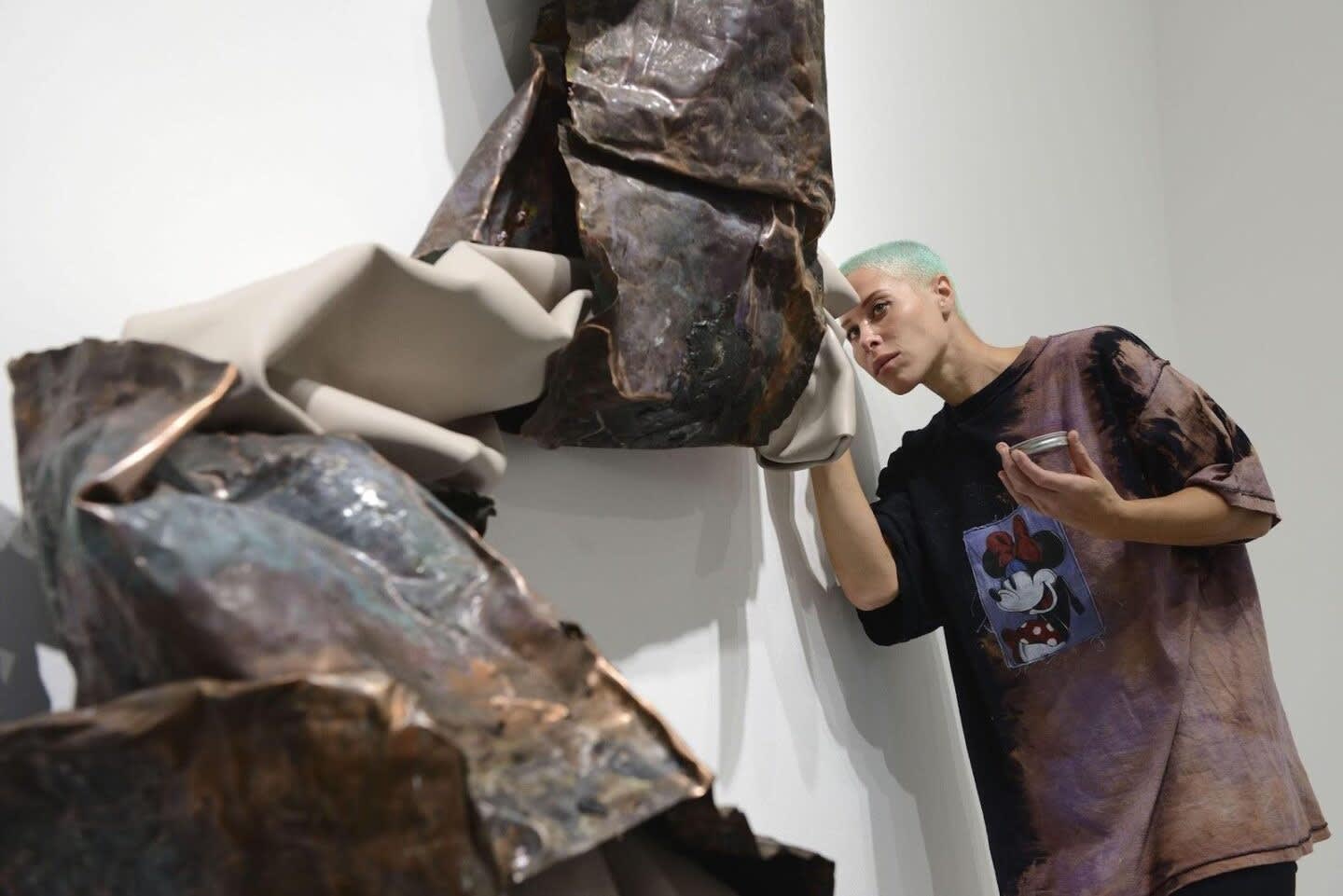
We first met the artist one year ago, on the occasion of her show at Kavi Gupta, during Expo Chicago week at the end of September 2019. (I admit, this show was one of the reasons why I took a flight from New York, having been impressed by her previous show at Denny Dimin in the Lower East Side). We are pleased to meet Yanko again for a conversation all the way in Italy, despite these unprecedented times.
Upon meeting the artist at Galleria Poggiali in Milan, we expand into broader topics such as personality, perception, femininity and more–as art should always encourage us to do.
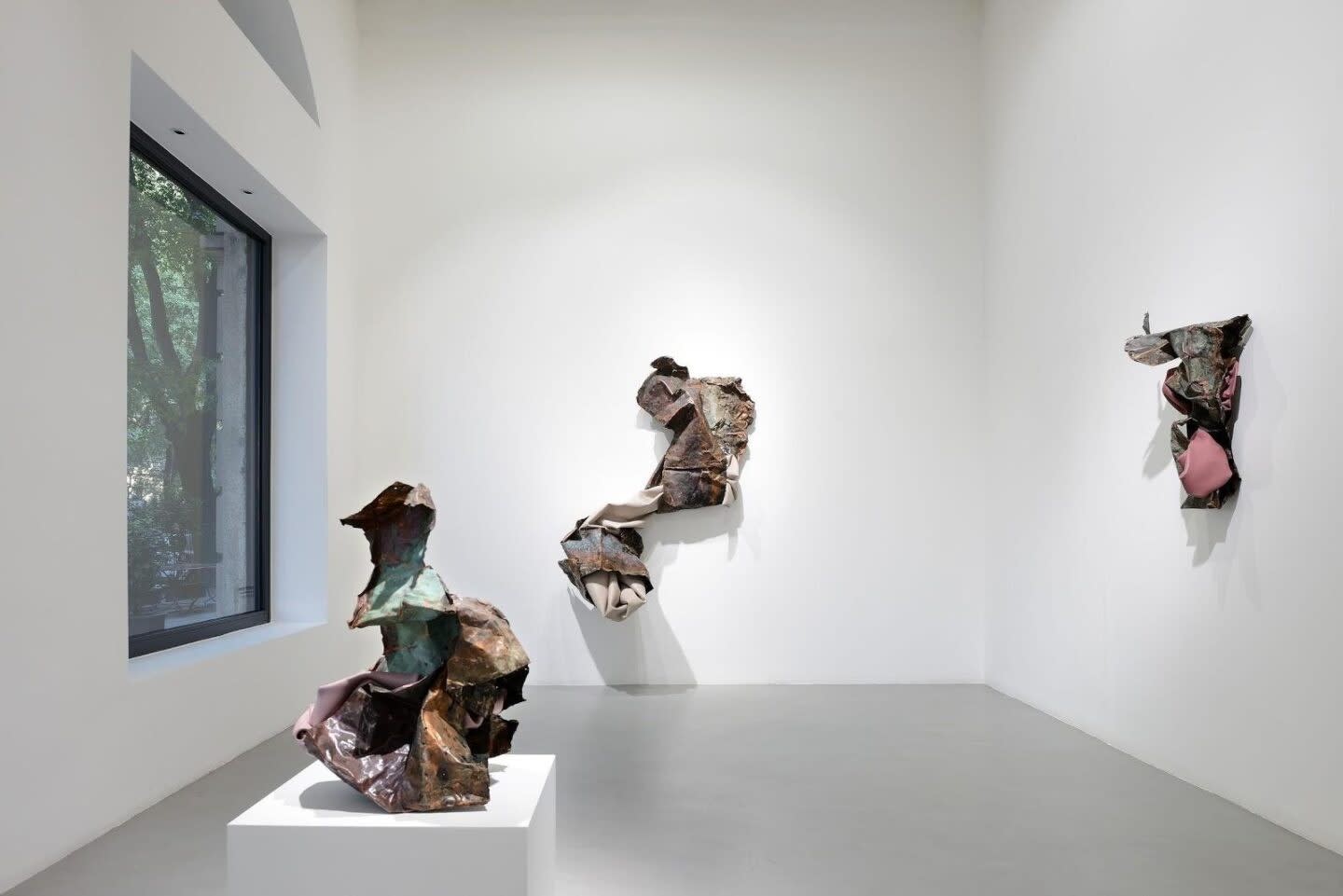 Ph. Michele Sereni – Courtesy Galleria Poggiali
Ph. Michele Sereni – Courtesy Galleria Poggiali
Kennedy, looking at those works I feel that you’re starting to dominate the material now. You started with painting, then painting on rubber. Now, you’re getting confident and soft with the material, as with an old partner where you already know the moves and don’t even need to speak.
Well, I just feel that we have been dancing together, and now, we are in the same rhythm. I’m understanding more and more about this relationship, and also about me and my practice. Now I know my material and I know what I want from it.
When I go to the yards I’m very specific about what I’m looking for. The color, the shape, the texture. I know what kind of partner I’d like to dance with. Over time, you come to learn who and how you are in the world by observing how you respond to the objects and events around you.
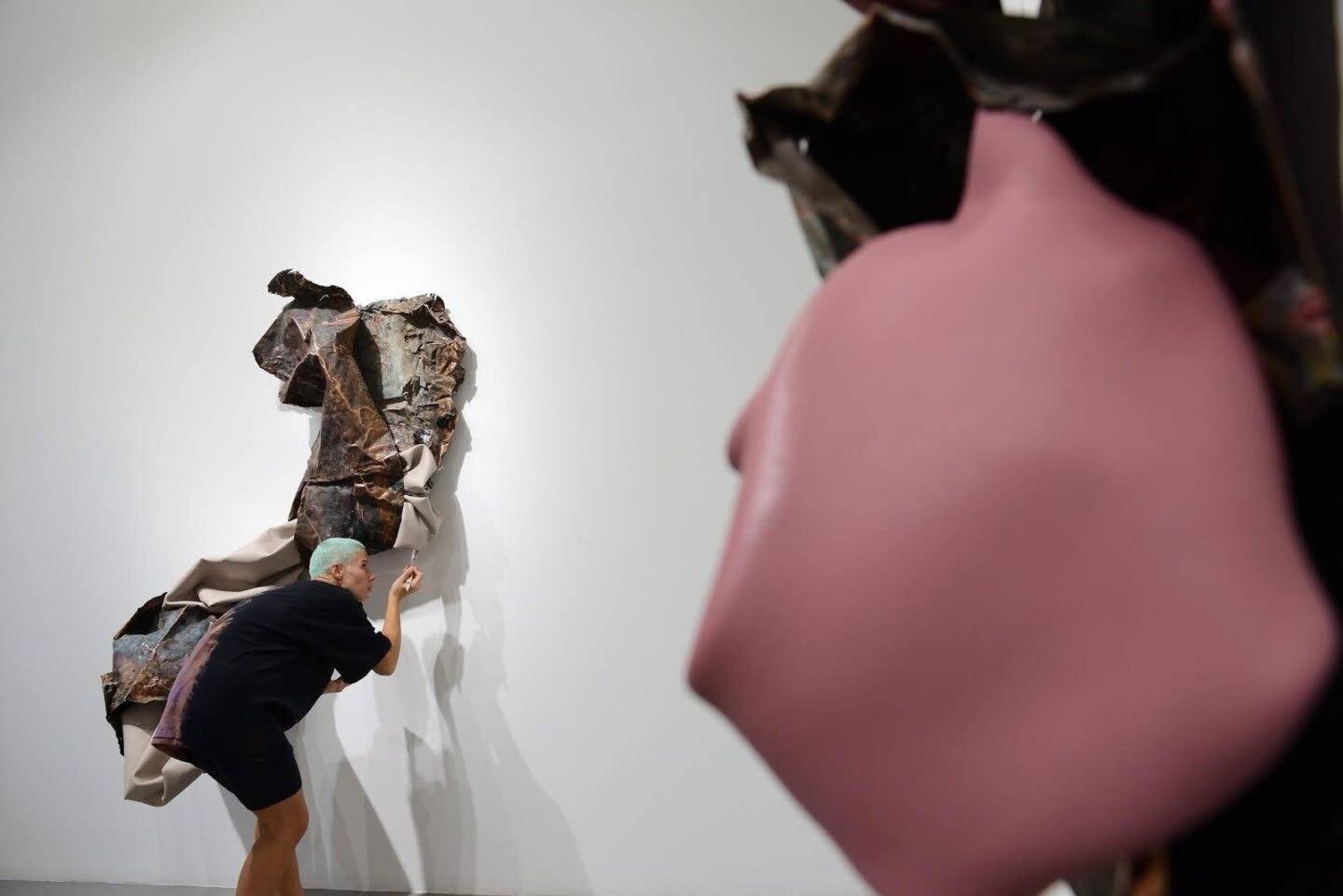 Ph. Michele Sereni – Courtesy Galleria Poggiali
Ph. Michele Sereni – Courtesy Galleria Poggiali
I feel that in the past 3 years you’ve succeeded in identifying your signature style. Would you say that you arrived at it? Do you think you would evolve from this, and, if so, do you know where you are directed?
I’ve been working for fifteen years to find clarity in my voice and put language to my vision, and now that I have, it’s just the beginning. Now the work can permeate.
You’ve been working with performance, and, in fact, your work is very much about the process. Are you thinking of working more on that, to integrate this with video?
The process has always been cathartic for me, since I started painting as a kid. Then I had to find my language, to articulate all of this. In this show, for instance, I was originally thinking I’d incorporate the voice and the story of the singer, Betty Davis, who is a large inspiration behind this show. But I then realized that these kinds of “literary approaches” are just an additional–and not a necessary–way to tell the story. The work tells its story, and activates other perceptions and thoughts in the viewer, but in a dialectic way. I’m more interested in this interaction between the viewer and the work, and the process behind its creation. The object is more like the pearl produced by the oyster–the consequence of making.
Video, though, can capture the conceptual nature of a show in a way that walking through a gallery may not. I do plan to rely on film to deepen the gravity of my work, but not necessarily as a centerpiece of a sculpture-based show.
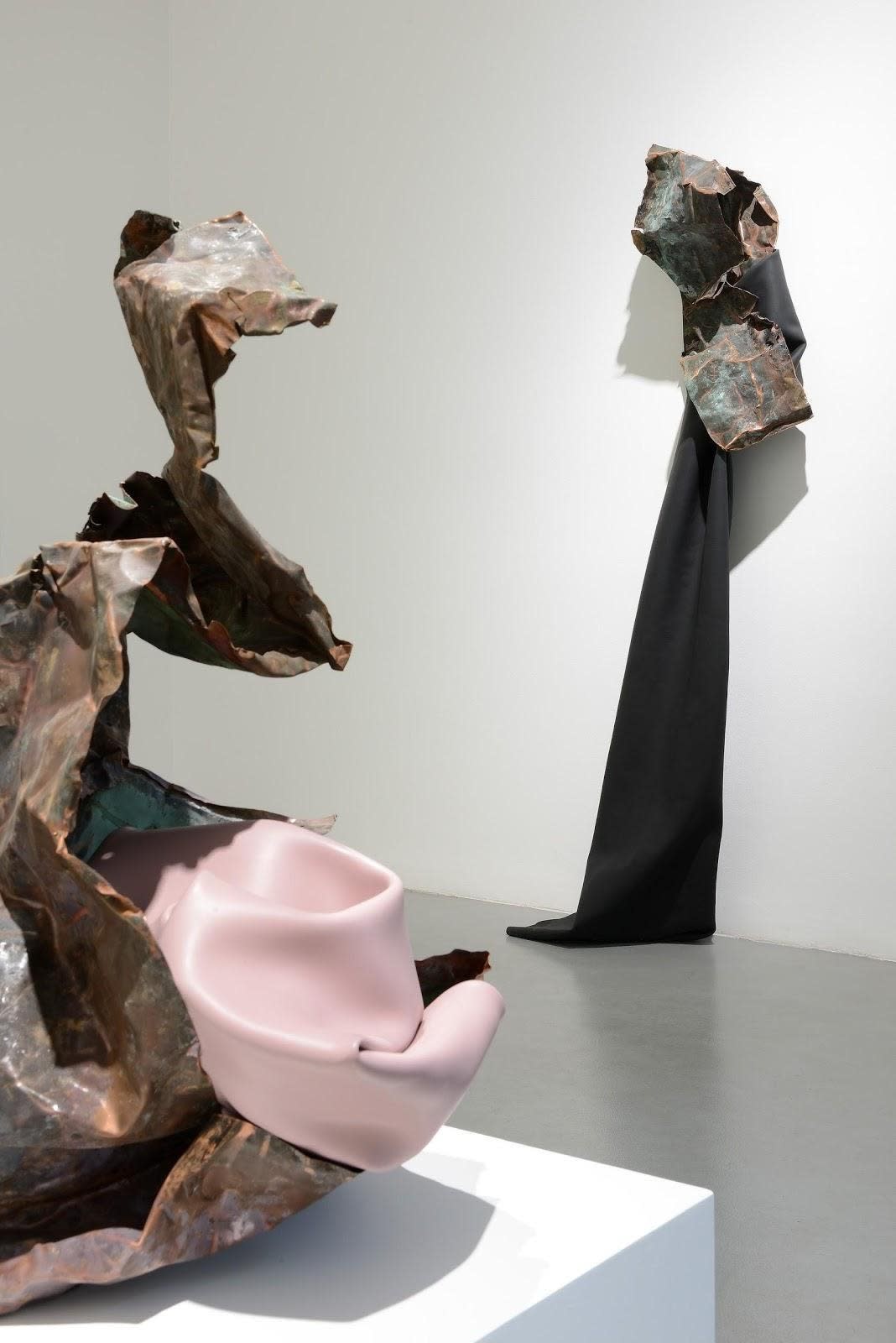
Ph. Michele Sereni – Courtesy Galleria Poggiali
Compared to the more geometrically structured forms at Kavi, I think these sculptures are much more sensual, and feminine. Here this raw and pretty masculine muscled metal elegantly bends to your touch, but also embraces these paint skins. These creatures are flirting with the visitor, but they still have an air of resistance. Can you tell me a little bit about the nature of this work?
This is a completely different body of work than what I made for my show Hannah at Kavi Gupta Gallery, and was made in a different time. Hanging out with this work in my studio, it felt like I was surrounded by women on turn of the century courtesans, who had a soft elegance to them. The work is prettier than I’m used to making and seeing in my space. But I use pretty only to suggest that the shapes and colors are easy on the eye. They are still rich and juicy. Emanate for example, has this vertical confidence, and yet a coy paint skin. It has depth that intrigues the viewer–it asks to be touched. After spending time with this work, I realized that there was a specific kind of character I developed: one with a knowingness of themselves. A specific, strong spirit.
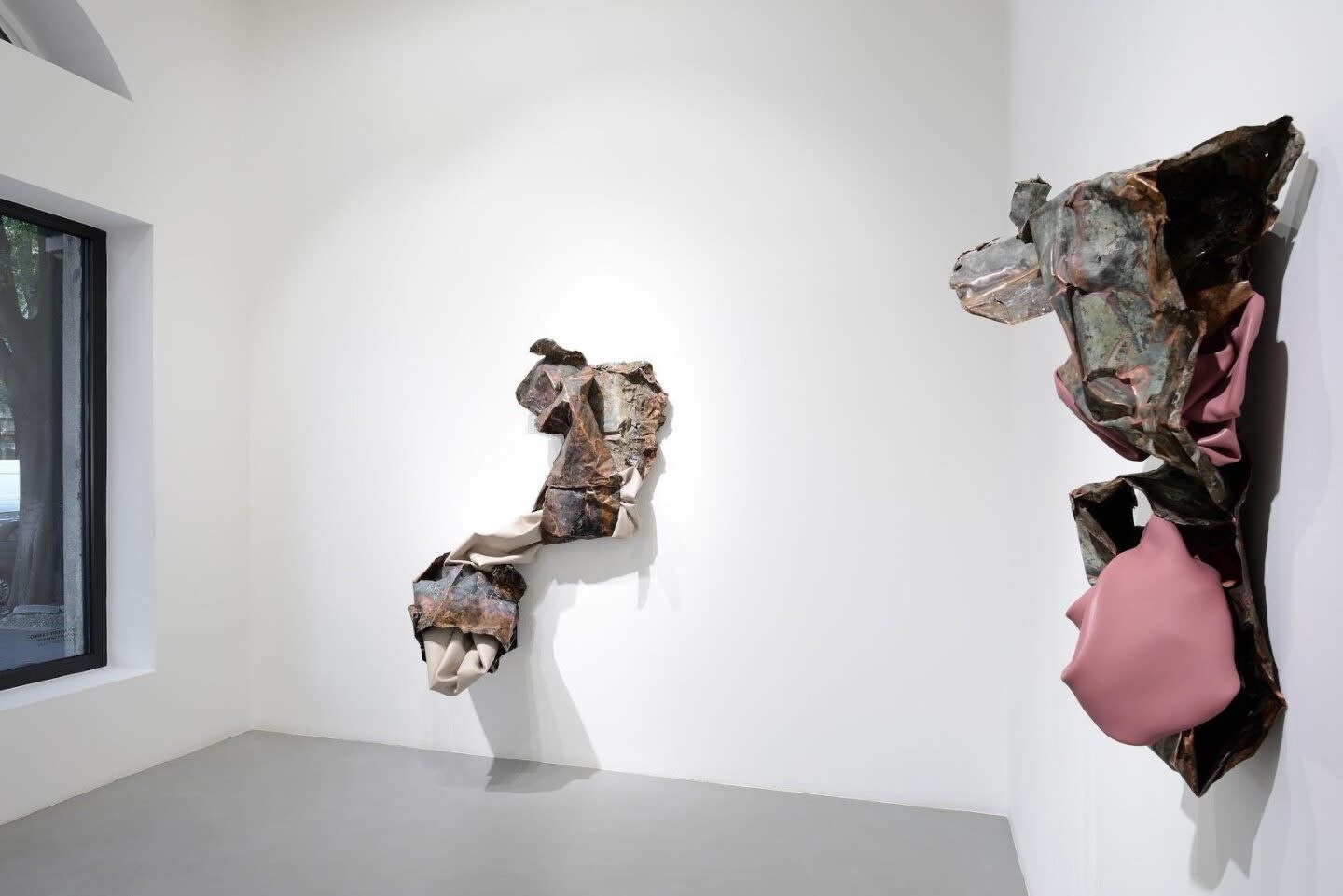
So you found Betty Davis this past summer, and saw yourself in her. But you were not trying to embody her soul in them?
I know I was looking for her, I didn’t just find her. And while she’s transmuted in this work, I am not trying to embody her. I think there’s a heartfeltness that I have for her having been censored, not heard. Her raw creative energy is undeniable and yet effectively denied. I see her as a surreal artist, channeling her subconscious in the way that Dali, Man Ray, Carrington and others did. And I think it’s safe to say that she’s been in my subconscious, and thus has informed the work. I needed her rawness, and to explore the subjects of rejection, and overcoming.

As women, how should we navigate and dominate the art world, as new opportunities present themselves?
This subject is something I’m actually talking about in my next show at Vielmetter in LA, “Salient Queens.” With that work, I recognize the women who have shown me how to take up space. Through the metal and paint skin I demonstrate malleability of material and its potential for evolution. My perceptual experience of metal is as something that’s bendable, changeable, responsive and my approach is also of that mind set. Using this material to express what these women have taught me felt right. The fluidity of the metal and paint skin allude to this question you ask about how we can navigate and dominate the art world: by being ourselves, and recognizing our abilities to take up space as we want to. This importance of not censoring the voice of the artist, and not feeling censored as a woman artist, and to encourage the viewers to make space in themselves to see it, without immediately asking what is this and how it is.
Well, this is actually what your work specifically asks viewers. And what we should be asked in every encounter with individuals. Your sculptures are definitely not conceived as static monads, but more as space of conversation and interaction. I’m sure that’s intentional?
I want my works to be places of discussion and stimulus for viewers to tune into their senses and work through intellectual conditioning. I want my work to provide space for viewers to really be in their bodies and make friends with ambiguity. In those moments of not knowing, there’s such potential for new understanding. Those are the conversations that I want people to have around my work–curious investigations of thoughts, feeling, being.
Abstraction has its own way of probing the senses, that’s why I’m so drawn to it. It’s a tool that hones an intuitive sight akin to critical thinking.
I can see that, totally. It’s all about the senses. Last question: Are you satisfied with this first presentation in Italy?
I’m very happy with this show, with these creatures. In the gallery, I’m able to tell the full story the collection has shown up as an edited book. As you walk through it, you turn each page and the chapters build on each other. I think this format serves the unfolding of this narrative.

24 September – 20 November

